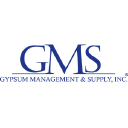/ factorpad.com / stocks / f22hdg.html
An ad-free and cookie-free website.
Our quantitative data points are meant to provide a high-level understanding of factors in equity risk models for Gms Inc. Portfolio managers use these models to forecast risk, optimize portfolios and review performance.
We show how GMS stock compares to 2,000+ US-based stocks, and to peers in the Wholesale Trade sector and Lumber, Plywood, Millwork, and Wood Panel Merchant Wholesalers industry.
Please do not consider this data as investment advice. Data is downloaded from sources we deem reliable, but errors may occur.
 Celebrating the 50th anniversary of its founding in 1971, GMS operates a network of more than 265 distribution centers across the United States and Canada. GMS's extensive product offering of wallboard, suspended ceilings systems, or ceilings, and complementary construction products is designed to provide a comprehensive one-stop-shop for its core customer, the interior contractor who installs these products in commercial and residential buildings.
Celebrating the 50th anniversary of its founding in 1971, GMS operates a network of more than 265 distribution centers across the United States and Canada. GMS's extensive product offering of wallboard, suspended ceilings systems, or ceilings, and complementary construction products is designed to provide a comprehensive one-stop-shop for its core customer, the interior contractor who installs these products in commercial and residential buildings.
Many of the following risk metrics are standardized and transformed into quantitative factors in institutional-level risk models.
Rankings below represent percentiles from 1 to 100, with 1 being the lowest rating of risk.
Stocks with higher beta exhibit higher sensitivity to the ups and downs in the market. (↑↑)
Stocks with higher market capitalization often have lower risk. (↑↓)
Higher average daily dollar volume over the past 30 days implies lower liquidity risk. (↑↓)
Higher price momentum stocks, aka recent winners, equate to lower risk for many investors. (↑↓)
Style risk factors often include measures of profitability and payout levels.
Companies with higher earnings generally provide lower risk. (↑↓)
Companies with higher dividend yields, if sustaintable, are perceived to have lower risk. (↑↓)
/ factorpad.com / stocks / f22hdg.html
A newly-updated free resource. Connect and refer a friend today.